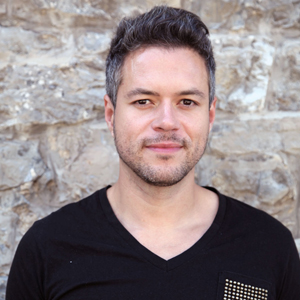My PhD is about how we perceive and relate to technologies that mediate our daily life interaction. I am especially interested in wearable haptic technologies and the subjective aspects of their use.
Recently we have seen popularisation in the use of haptic feedback and gesture-based interaction in consumer electronics. Also, advances in sensor technology and Virtual Reality introduced artefacts that aim to reproduce how we touch in real life. Understanding how we perceive and make sense of digital touch is critical to developing and analysing this type of technology.
I hope that Engineers, designers, and artists use my research as a framework to create and analyse new forms of touch and be touched allowed by wearable haptic technologies. My research aims to incorporate the technical and physiological, and psychological aspects of relationships mediated by digital touch. Still, it is also sensitive to the complex socio-cultural specificities of a given situation.

As well as my PhD, I also became involved in the creation of ShiVent - a simple to use, low cost, non-electric and oxygen efficient ventilator that helps patients facing respiratory challenges. I got involved in the project after Yusuf Bilesanmi - another PhD candidate at Loughborough University - posted a call for contributors for an idea he was working together with Dr Yusuff Shittu in our PhD community WhatsApp group.
Besides me, the other two PhD candidates - Gaurav Nanajkar and Pawel Nycz - reacted to the call, and we start working remotely. One year later, and with many people and institutions' support, we achieved good results, and recently we were nominated to the African Prize for Engineering Innovation. To know more, I recommend visiting our website.
The entire team is humbled and grateful to have the project nominated for the African Prize for Engineering Innovation. Speaking for myself, I feel honoured to work together with the brilliant minds that came together, reacting to a huge and unprecedented problem and were able to combine a simple approach with engineering artistry and social sensibility.